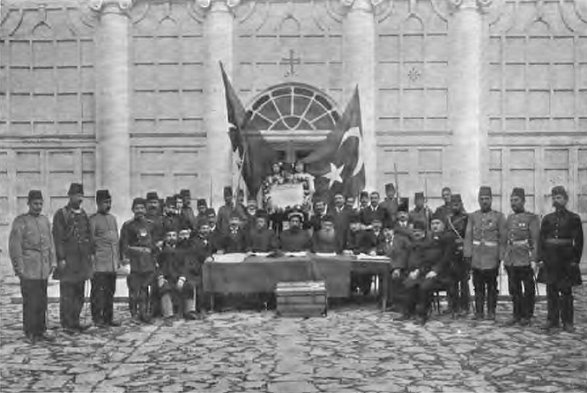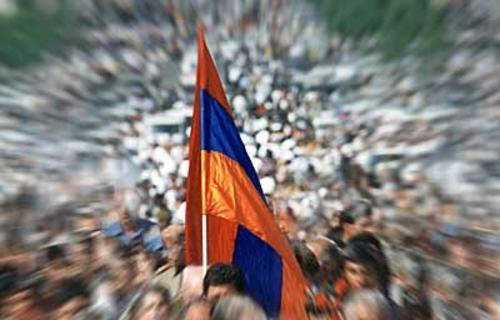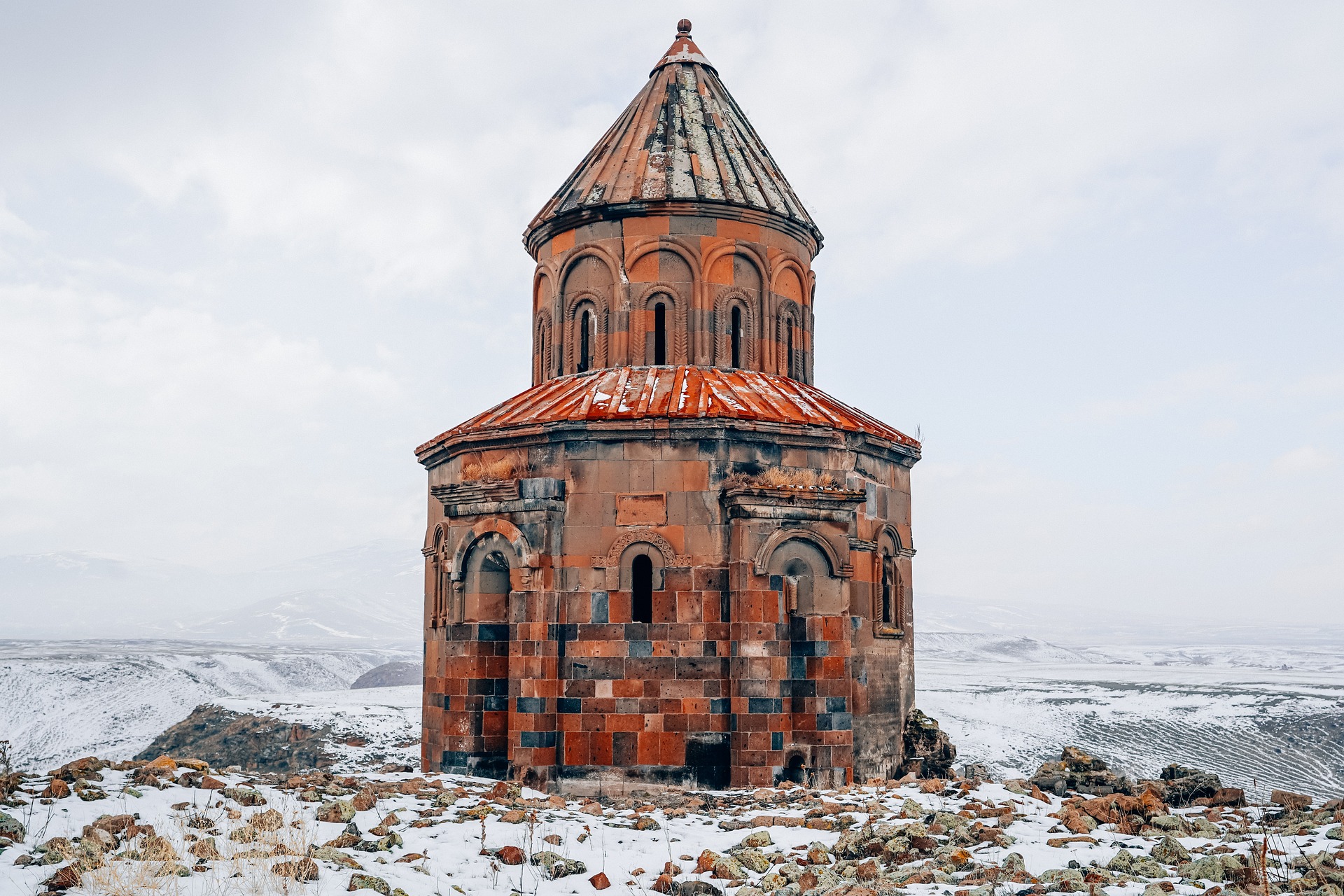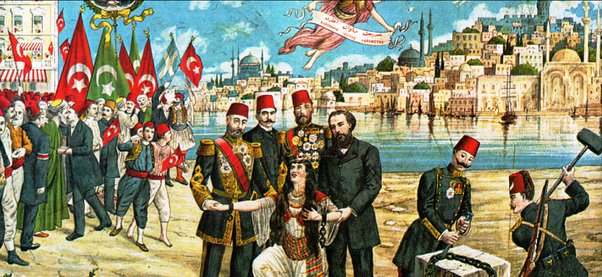First contact between Armenians and Turks date back to the early 1100s when nomadic Turkish tribes started showing up in numbers in Anatolia. These tribes begun their immigration from the harsh conditions of the steppes which today are north western China and still home to the Moslem Turkic Uygurs. Armenians at the time were mostly under the prosecution of the decaying Byzantium and/or Persian empires. Decline of the Byzantine increased as the Turks formed the Selcuklu empire which was welcomed by the many of the regions minorities as it brought a new order and a period of tranquility until the Christian Crusades began which in turn became the major cause for the decline of the Selcuklu which bore the full brunt defending the Moslem lands. The Selcuklu was followed by the 600+ year Ottoman empire in which Armenians found a chance like many other ethnic groups to serve in diverse fields in the government as well as live a much more peaceful and protected life.
The Osmanli Empire (House of Osman) called the Ottoman Empire due to the mistake of Italian traders hundreds of years ago consisted of a multitude of ethnic and religious groups. The relationship of the majority, Moslems and the other religions were almost at all times favorable compared to their previous experiences under rulers of different religions.
The Ottoman Millet system of self governance was the major reason for the empires more then half millenium existence and in many ways are reflected in the current states model of the USA, except that the regions were at times even less loosely regulated. Simply put the none Moslems were exempt from military service and needed to only pay their taxes as determined together by the leader of their sect or social group and the Ottoman court. Non Moslems were later allowed into the military as a result of colonization efforts of the west which caused periods of non stop warfare on many fronts.
However during and after the eighteen hundreds the Empire entered a period of decline. It had failed to modernize and very slow to industrialize, nationalism was slowly boiling in Europe. Through a combination of failing to modernize, unsuccessful row of Sultans (Emperors) added with the colonialist moves of the west did not allow the Ottoman to catch up fast enough.
To give an idea of the expansionist desires of colonialism, the Ottoman armies fought wars in 1806-12, 1828-29, 1832-33, 1839-40, 1853-56, 1877-78, 1897, 1911-13, 1914-18, 1919-23 at great human and material cost. These dates dont even include internal uprisings. The resulting loss in man power undermined the once superior preparedness of the army, loss of land undermined revenue, the slow but steady seeping of ethnic nationalism coupled with the influx of Moslem refugees running from ethnic cleansing in the Balkans and Central-Caucasia stirred inter communal tensions.
The Ottoman Empire at the time was still a large entity but seen as the sick man of Europe with great wealth to be divided upon his death. Depleted military of the Ottomans required that internal forces which normally patrolled and kept law & order in the rural areas were summoned to the battle fronts. This is when the Russian dream for warmer waters (the Bosphorus/Dardanelles) and expansion in caucasia really fired up. In fact most European powers such as UK, France, Italy, Germany, Austria-Hungary were all interested in getting a piece of the Ottoman lands one way or the other. With the original intent of dividing up the Ottoman Empire, the western nations and Russia drew various plans of intervention to speed up the death and burial of the sick man. With the context of protecting the Christian minorities these powers started demanding things of the Ottoman empire which it was not in position to provide for anyone in the empire.
The plan was to bring chaos to the internal order of the Ottoman Empire, wreck the tranquility which the Ottomans had succeeded in keeping different ethnic groups living side by side peacefully and then intervening and grabbing large pieces of land with the pretense of protecting its minorities. The Russians & the British were the most successful of the colonial powers. The Russians were able to incite the Ottoman Armenians which shared a common religion with the promise of their own country while the British used a combination of bribes and promises of sheikdoms to local Arabs. As a result of the mostly British (but also the rest of the WW1 Allied forces) intervention most of the middle east’s borders have been drawn artificially without any real ethnical or national basis hence the high level of conflict in the region today. This is also how the Armenian question came up. Czarist Russia saw that a very trusted Ottoman minority (actually called the “trusted millet”) shared common religion (Orthodox) and was directly on the path of its expansion plans. The Russian Armenian relations began in the middle of the seventeenth century when Russia started flexing its expansionist military. In short Armenians were promised a country of their own if they fought on the side of the Russians.
The plan was two fold; first Armenian revolutionaries would join the ranks of the Russian forces but the second and more importantly Armenian revolutionaries would cause chaos behind the Ottoman lines. Their action behind the lines would not be limited to military but unprotected Moslem villages causing backlashes at Armenian villages and in return Russia would make claims on the Ottomans. Disrupting already limited supply lines, attacking in transit groups and causing terror behind lines against civilians which would require the Ottomans to divert man power from the front lines to the back for policing reasons caused un imaginable harm to the Ottoman efforts to protect its lands and its citizens.
The Ottoman government realized that it could no longer police the complete “back office” while fighting multiple wars and decided to force the migration of Armenians from the regions of which they caused havoc altogether to other parts of the empire where they would be less useful to the Russians. In the long run with the fall of the Czar, Russians left the Armenians in the cold. The civilian Moslem people (Turks, Kurds, Arabs, etc.) whom they had attacked in the meantime came back to haunt them. The atrocities committed by Armenian revolutionaries on Moslem populations of the region and by the advancing Russian forces on the conquered territories created a backlash. The refugees barely having survived Russian/Armenian massacres lashed back at the Armenians which were left alone by the Russians causing mass deportations and refugees on the Armenian side. The Ottoman Empire which had been reduced in size by more then 50% at this time was in no position to police or control regional violence, a civil war was taking place while it still tried fighting full battles on 3 distinct fronts (Balkans, Middle East, Caucasia) at the same time. The Ottoman Empire was the only Axis power left fighting when Germany and Austria-Hungarian empires fell at the end of World War 1.
When the Turkish War of Independence was won, peace came with the Lausanne Treaty. Part of the treaty of 1923, established Armenians together with Greeks and Jews as citizens of the new Republic with an official minority status.
Today Armenians continue their lives in Turkey in diverse fields mostly concentrated in Istanbul and some other Anatolian towns. As it was in the Ottoman Empire they are free to practice the requirements of their religion and continue to be a integral part of the state as they had been before. Of the latest news on Armenians in Turkey; On 11 October 1998 Sunday, 79 lay delegates were elected in the elections held in Istanbul, Kayseri, Diyarbakir, Iskenderun, Kirikhan and Vakifkoy (Antioch). Later in the week 10 clerical and 79 lay delegates forming the Armenian Church General Assembly elected the new Religious Council and Mesrob Mutafyan as the 84th Armenian Patriarch of Istanbul.
Today most problems on the issue are caused by the anti-Turkish-everything fanatic lobbying of the Armenian Diaspora and the occupation of more then 20% of Azerbaijan’s (Turkic) land by the Republic of Armenia.
Armenians of Armenia and the Diaspora will be touched upon later on.




